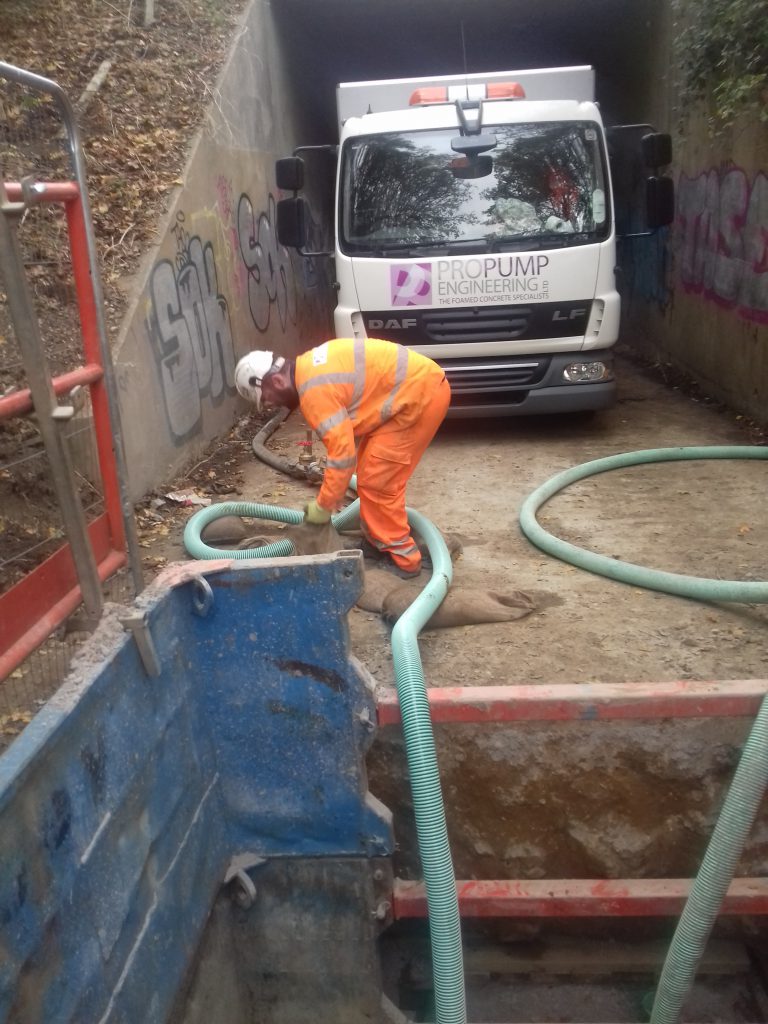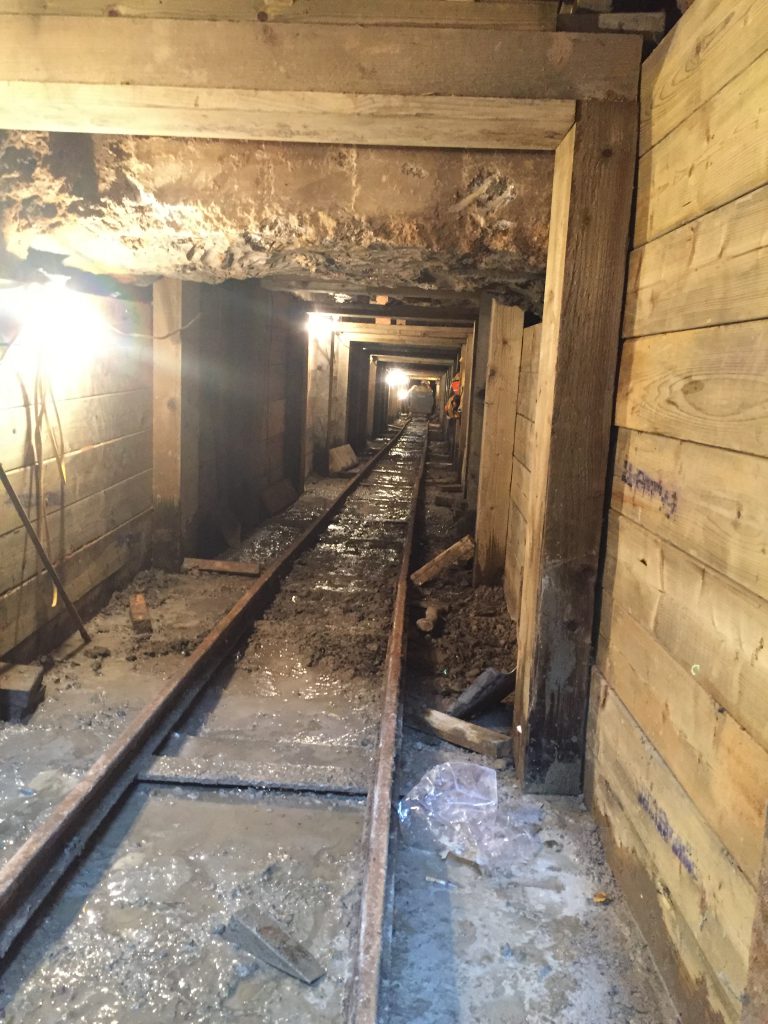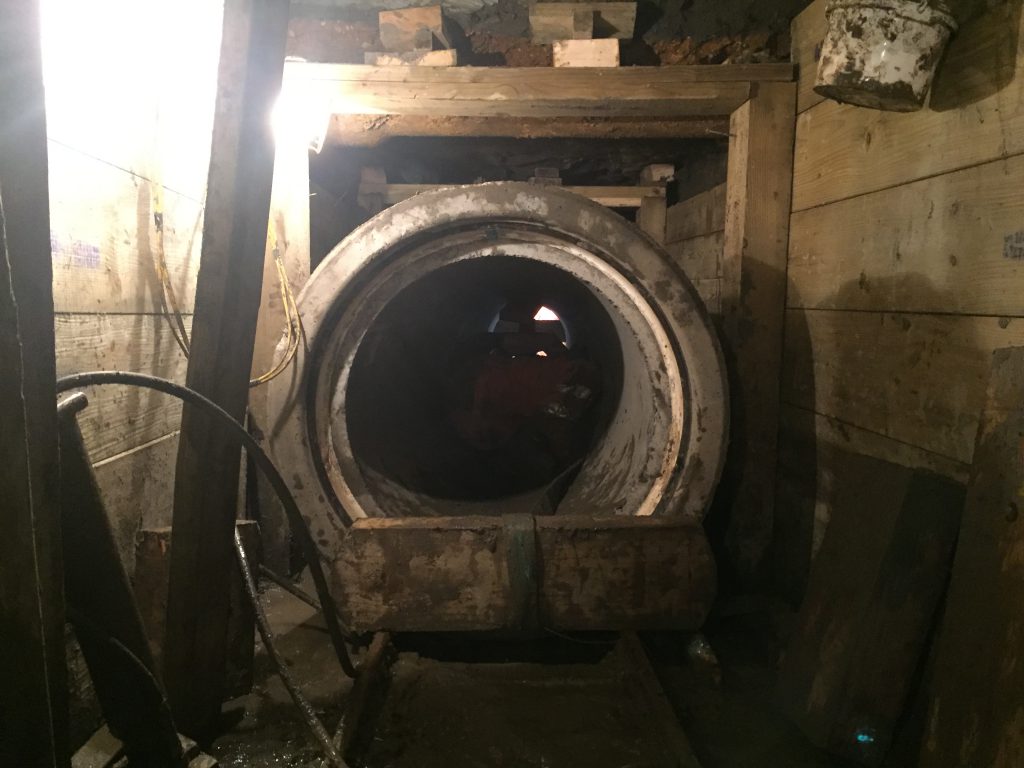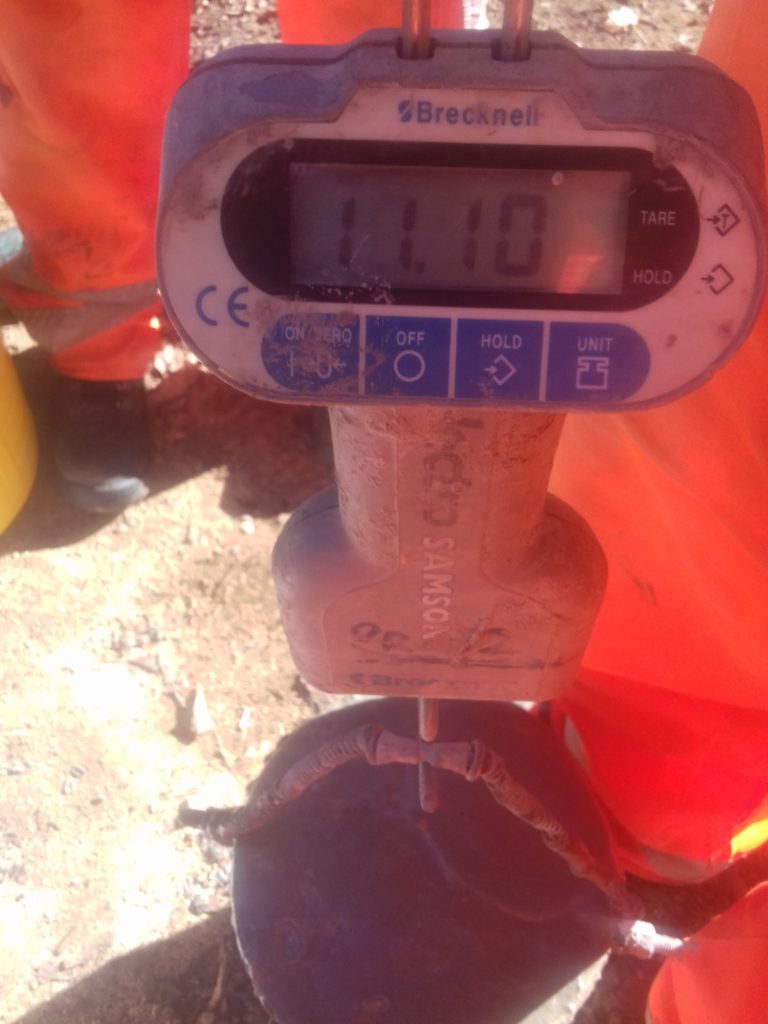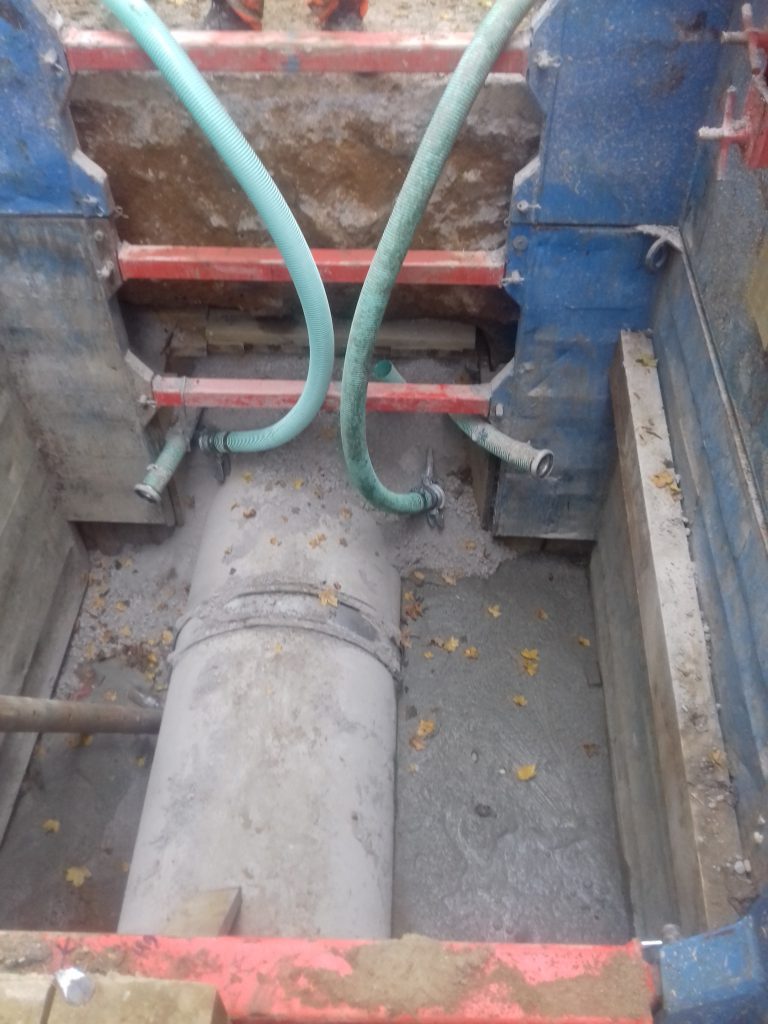Annulus fills
Foamed concrete has a great number of potential uses. The fluid nature of this Foamed cement / grout combination allows it to be pumped much easier and at considerably less pressure than conventional concrete mixes. This allows a sufficiently fluid foamed concrete with no large aggregate to fully encapsulate utilities. It is also a key component to minimising any voids or gaps without the use of vibration or tamping.
A good example that shows the flexibility of an appropriate Foamed concrete is an Annulus fill. The definition of a mathematical annulus is: “a region bounded by two concentric circles” however it is also typically used to describe any structure containing another pipe, such as a heading, as per this example.
The use of foamed concretes ranging in densities from 1300 KG/m3 down to 1000 KG/m3 are most common in this application. Propump can however provide material with a density as low as 450 KG/m3. Materials supplied by Propump Engineering have good flow characteristics making the backfilling of such voids a much less labour and time intensive solution, as well as reducing the risk of operatives in confined spaces.
Unlike using traditional back fill material or “dry pack” where confined spaces make the process of filling difficult, Foamed concrete or aerated concrete does not require compacting and will readily fill most if not all nooks and crannies.
Using the bespoke, in house designed, In-line foam generation system. Propump can mobilise a single 7.5 Ton truck to site with two technicians and all the required equipment required to process up to 250 cubic metres per day.
In the example of filling this annulus, the material provided has a specification of 1100kg per cubic metre and a strength of between 1 and 2 newton per mm, meaning that one 6 cubic metre ready mix delivery will be processed on site in around 9 minutes giving a total of 12 cubic metres at point of placement. Typically foamed concrete provided by Propump Engineering can save anywhere up to 4 times as many deliveries to site compared other types of infill or processing.




